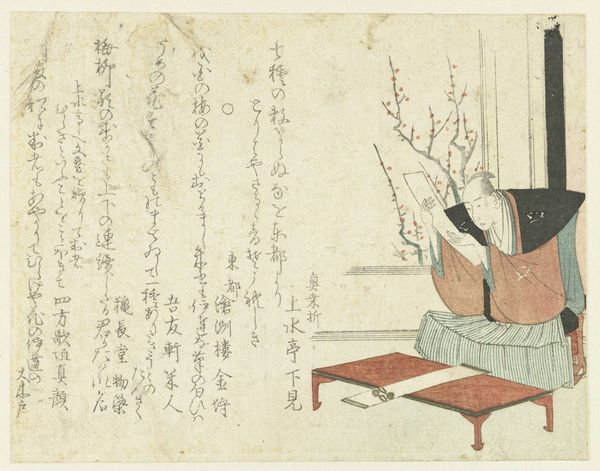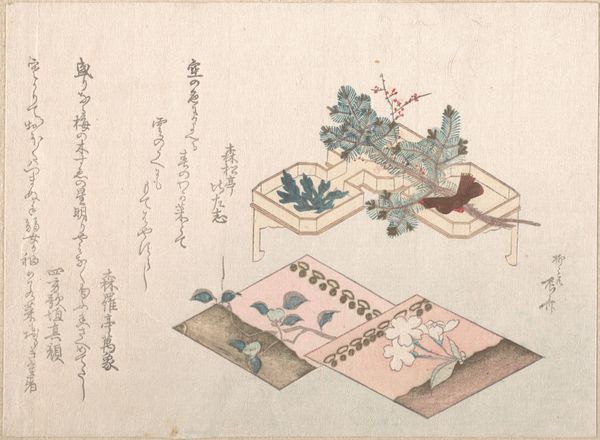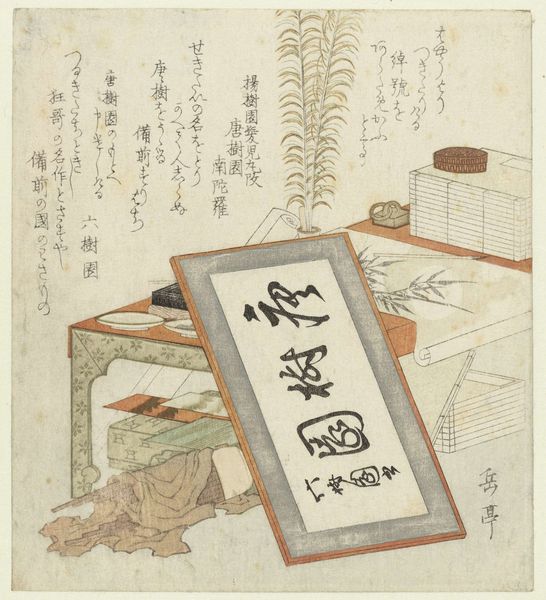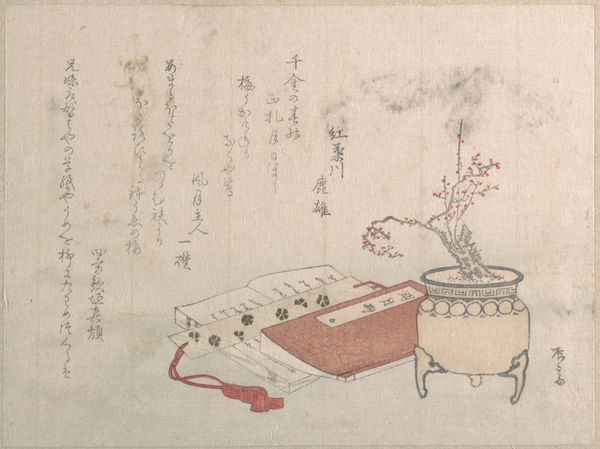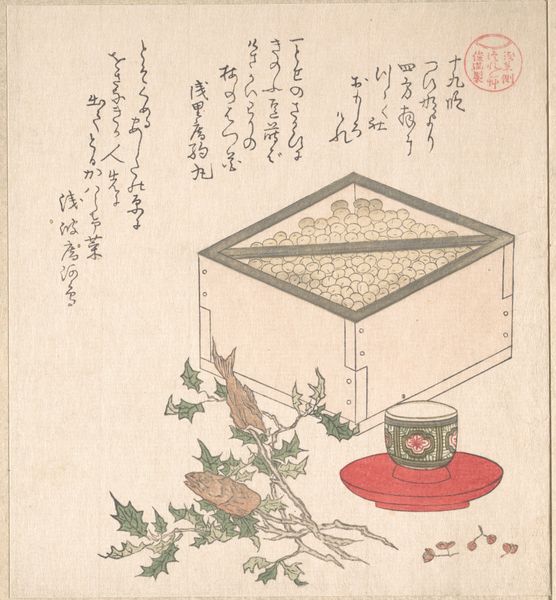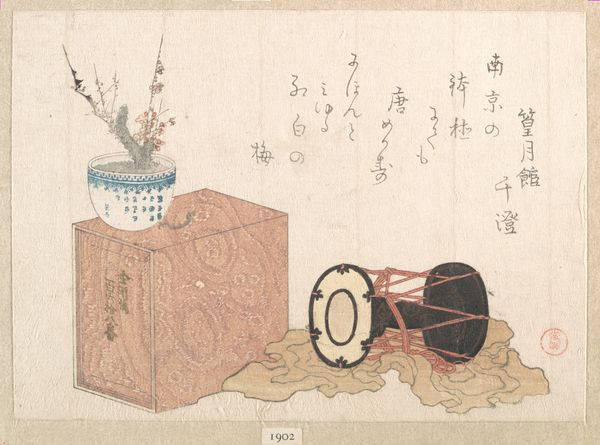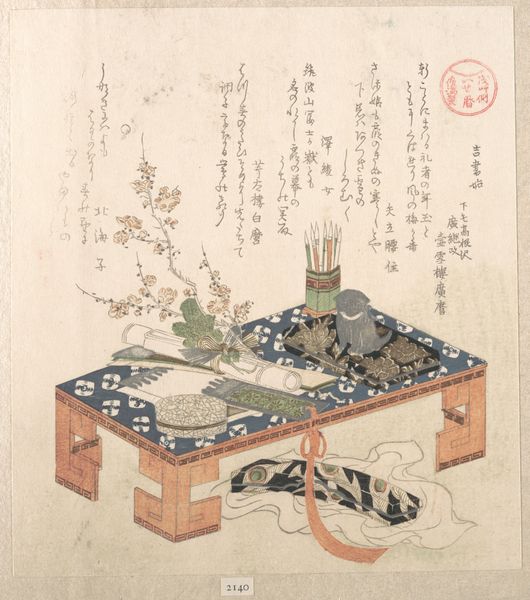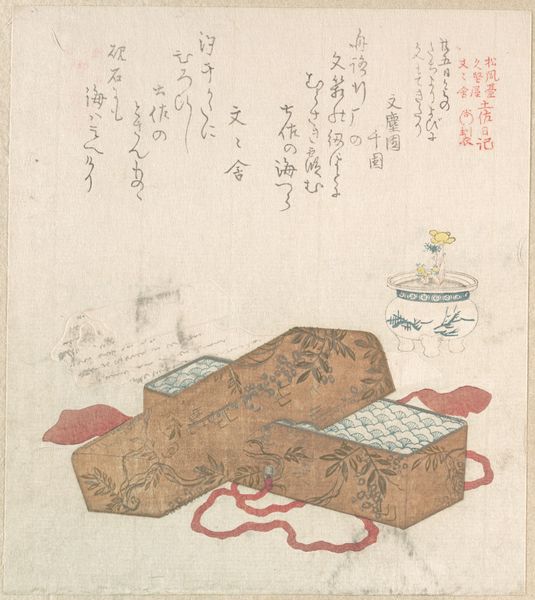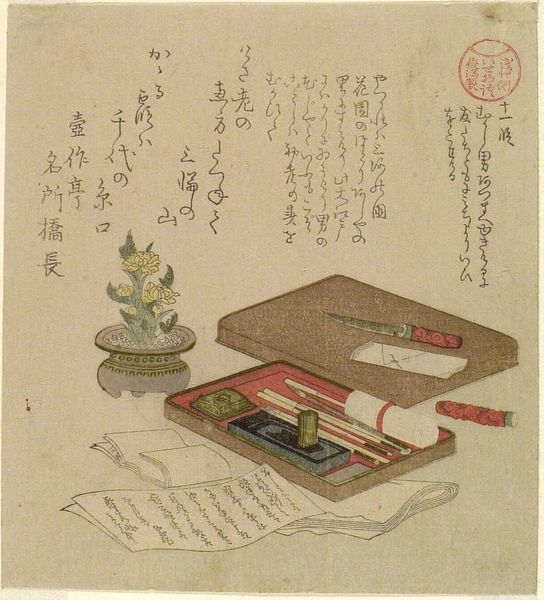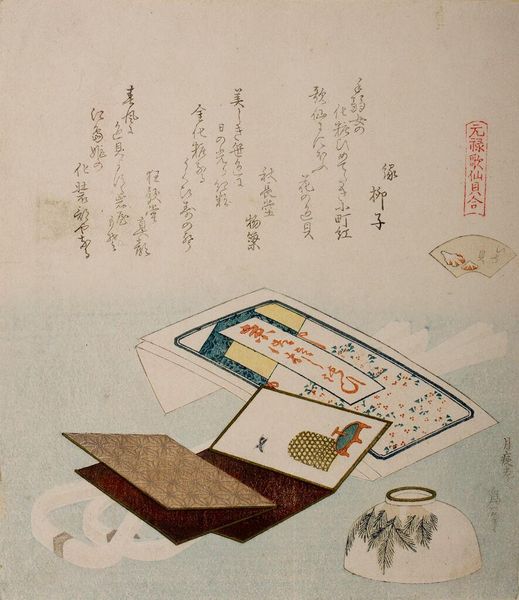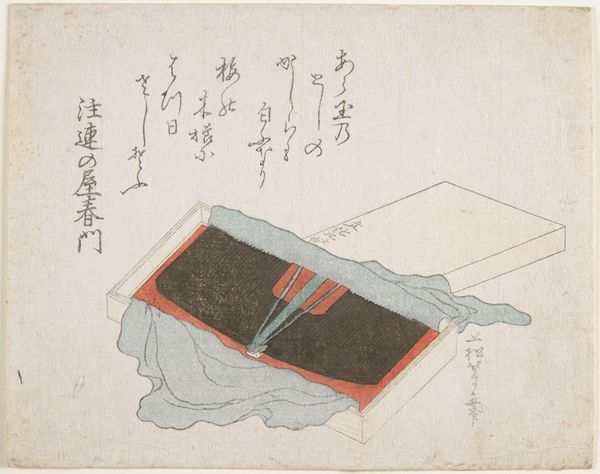
New Year's Day of the Year of Snake c. 19th century
0:00
0:00
print, ink, woodblock-print
# print
#
asian-art
#
ukiyo-e
#
ink
#
woodblock-print
#
orientalism
#
line
Dimensions: 5 1/8 x 7 3/16 in. (13 x 18.3 cm) (image, sheet)
Copyright: Public Domain
Katsushika Hokusai created 'New Year's Day of the Year of Snake’ in Japan during the Edo period, a time of economic growth, strict social order and relative peace under the rule of the Tokugawa shogunate. This print shows a bonsai arrangement alongside a pair of scissors and an inscription of a New Year’s poem. Hokusai who was a master of ukiyo-e, or “pictures of the floating world,” often reflected in his art the ephemeral beauty of nature and the changing seasons, concepts deeply rooted in Japanese culture and Zen Buddhism. Despite his success, Hokusai faced personal hardships, including poverty and family loss. It’s impossible to ignore the scissors in this print, which are commonly associated with the cutting away of bad luck. Is Hokusai suggesting this, or the pruning and shaping of new beginnings? The bonsai, with its delicate blossoms, evokes a sense of hope and renewal, while the scissors hint at the transformative power of human intervention. This is a testament to the human spirit's capacity for resilience and creativity, even in the face of adversity.
Comments
No comments
Be the first to comment and join the conversation on the ultimate creative platform.
